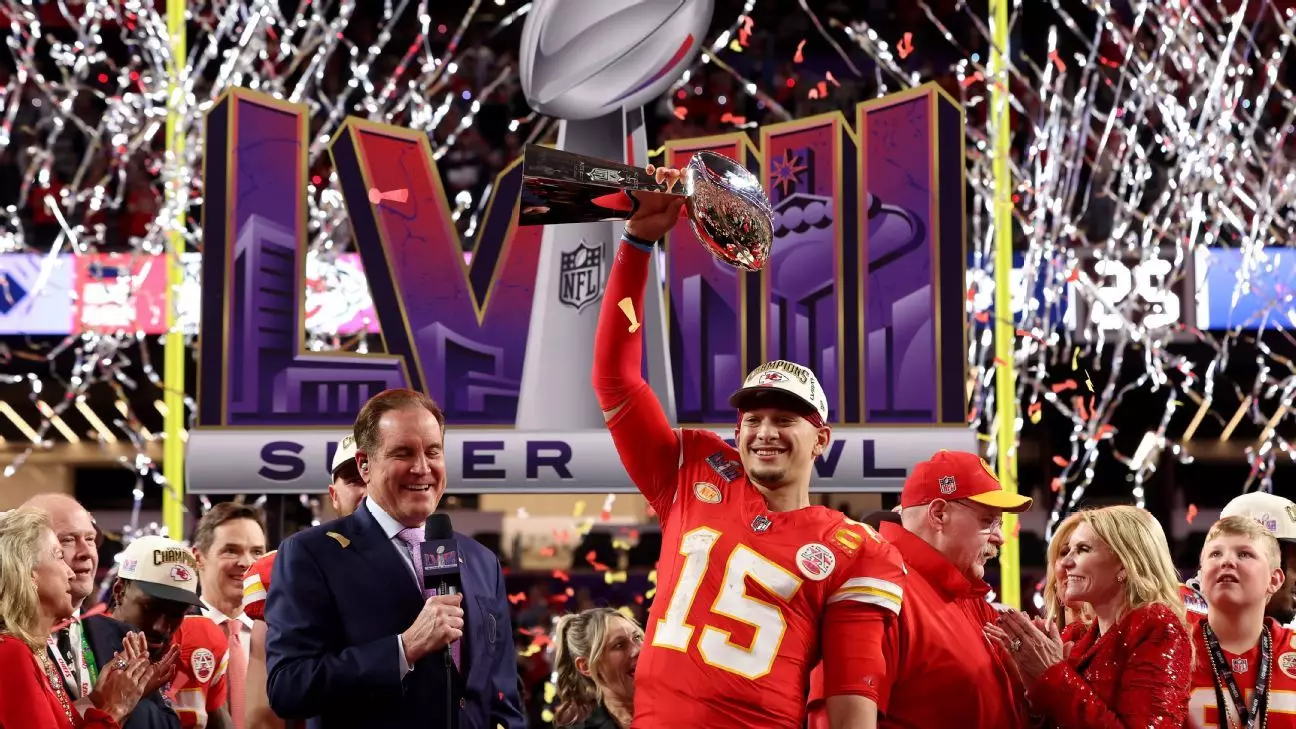The Super Bowl is one of the biggest sporting events in the United States, with millions of viewers tuning in each year. However, the recent matchup between the Kansas City Chiefs and the San Francisco 49ers surpassed all expectations, breaking records both in terms of viewership and duration. This article will delve into the details of this historic game, analyzing the factors that contributed to its success and discussing its impact on the future of televised sports.
The Super Bowl has always been known for its massive viewership, but the 2023 edition took it to a whole new level. According to Nielsen and Adobe Analytics, the game drew an average of 123.4 million viewers across television and streaming platforms. This figure broke the previous record set in 2022 when the Kansas City Chiefs triumphed over the Philadelphia Eagles. The 7% increase in viewership demonstrates the growing popularity of the Super Bowl and the cultural significance it holds for audiences around the country.
One of the key factors contributing to the record-breaking viewership was the extensive coverage of the game across various television networks and streaming platforms. The game was televised by CBS, Nickelodeon, and Univision, attracting viewers from different demographics and language preferences. Additionally, the game was streamed on Paramount+ and the NFL’s digital platforms, providing accessibility to viewers who preferred to watch online. This multi-platform approach ensured that fans could tune in from anywhere, catering to the diverse viewing habits of modern audiences.
Inclusion of Out-of-Home Viewers
Another factor that played a significant role in the increased viewership was the change in how viewers are counted. In 2020, Nielsen began including out-of-home viewers in its ratings, albeit from limited markets. However, this year marked the expansion of this measurement to all 50 states, allowing a more accurate representation of the actual viewership numbers. By accounting for viewers who watched the game outside their homes, Nielsen captured a broader audience and showcased the true reach and impact of the Super Bowl.
Beyond the record-breaking viewership, the game itself provided an incredible spectacle that kept viewers on the edge of their seats. With only the second Super Bowl to go into overtime, the Kansas City Chiefs’ victory over the San Francisco 49ers delivered an unprecedented level of excitement and suspense. The thrilling nature of the game, characterized by its back-and-forth scoring and dramatic plays, contributed to the overall appeal of the event. CBS Sports chairman Sean McManus aptly summed it up, stating, “I can’t imagine a Super Bowl any better or more exciting than this.”
Pop Culture Influence
While the Super Bowl has always attracted a massive audience, this particular game had the added attraction of pop superstar Taylor Swift in attendance. Swift’s connection to Chiefs tight end Travis Kelce brought in new fans to the NFL, adding a unique cultural element to the event. The presence of a beloved celebrity like Taylor Swift not only boosted the profiles of the individuals involved but also added a touch of glamour to the proceedings. This fusion of sports and popular culture made the Super Bowl even more enticing and drew in viewers who may not have been regular football fans.
The record-breaking viewership of the 2023 Super Bowl marks a turning point for televised sports. Despite concerns over cord-cutting and declining viewership in recent years, the past two Super Bowls have seen consistent viewership numbers above the 100 million mark. This resurgence indicates that the Super Bowl continues to captivate audiences and holds a special place in American culture. It also emphasizes the importance of adapting to changing viewing habits and embracing multi-platform strategies to engage viewers across different mediums.
A Successful Season
The success of the Super Bowl can be seen as part of a larger trend within the NFL. The playoffs leading up to the big game saw an increase of 9% in viewership compared to the previous year. Moreover, the regular season also saw impressive numbers, averaging 17.9 million viewers, tying for the second-highest average since data tracking began in 1995. These figures signal a growing interest in football and a reinvigoration of the fan base, showcasing the enduring popularity and cultural significance of the sport.
The 2023 Super Bowl will go down in history as the most-watched program in television history, breaking records and captivating audiences across the country. The combination of extensive coverage, inclusion of out-of-home viewers, and a thrilling game resulted in a truly unforgettable experience. This historic event not only solidified the Super Bowl’s standing as a cultural phenomenon but also highlighted the importance of adapting to evolving viewer preferences in the digital age. As the Super Bowl continues to fascinate and inspire, it will undoubtedly shape the future of televised sports and redefine the possibilities for engaging and captivating audiences worldwide.


Leave a Reply